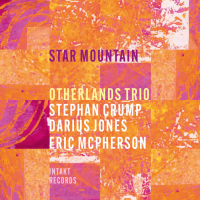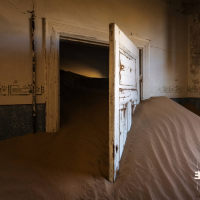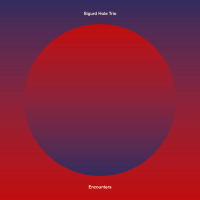Home » Jazz Articles » Album Review » Henry Threadgill Ensemble: The Other One
Henry Threadgill Ensemble: The Other One
After his pioneering trio work with Fred Hopkins and Steve McCall in Air, Threadgill created much of his most compelling music with mid-sized ensembles. Whether with his Sextett in the 1980s on releases like Easily Slip into Another World (Arista/Novus, 1988) and Rag, Bush and All (Arista/Novus, 1989), or Very Very Circus in the 1990s, on Too Much Sugar for a Dime (Axiom, 1993) or Song Out of My Trees (Black Saint, 1993), Threadgill's penchant for creating unique harmonic possibilities amidst churning, often infectious rhythmic motifs was his trademark, and having at least a half-dozen colleagues in tow gave these projects their creative vitality. More recently, his releases by his Zooid group have tended to draw on a quintet format, as on 2021's Poof (Pi Recordings). All of which made Threadgill's turn toward a large-ensemble format in 2018 one of his most intriguing ventures. His group for that project, the curiously-titled 14 or 15 Kestra: Agg, created Dirt...and More Dirt (Pi, 2018), and it was invigorating to hear Threadgill's compositions make use of a wider palette (in this case, one that included two drummers and two pianists) to give voice to his expansive pieces. At first blush, The Other One would seem a related endeavor, with a twelve-member ensemble called into action (albeit one in which Threadgill serves only as composer and conductor). But more than any previous Threadgill recording, this release possesses much stronger classical resonances, and a correspondingly attenuated jazz language. Even so, there is more than enough stimulating music in its hour-long runtime to justify the praise it will no doubt receive.
The ensemble here is not without connections to Threadgill's earlier projects, as it includes David Virelles (piano), Jose Davila (tuba), Christopher Hoffman (cello) and Craig Weinrib (percussion), all of whom have been present on recent Threadgill albums. But there is a notable absence, namely that of guitarist Liberty Ellman, who has played a critical role in the rhythmic and melodic propensities of Threadgill's music since Up Popped the Two Lips (Pi, 2001). And with a strong string and woodwind section including a second cellist (Mariel Roberts), a violinist (Sara Caswell), violist (Stephanie Griffin) and two bassoonists (Sara Schoenbeck and Adam Cordero), the ensemble has the fundamental character and sound of a plus-sized chamber group. Blues and jazz references emerge here and there, but they tend to be fugitive and fleeting—although certainly no less effective and memorable for that.
The album is comprised of a long composition, "Of Valence," which itself has three movements, two of which offer a number of relatively brief sections that bring smaller configurations of the ensemble to the forefront; Virelles gets an especially motion-filled five-minute solo opening during the first two sections of Movement I. And if the music is not quite as hard-hitting and rhythmically intoxicating as Threadgill's most well-known projects, there is something irresistible about hearing the bassoons and strings take on so much of the heavy lifting, particularly in their delicate interactions with Virelles. Expertly managing the negotiations between composed and improvised forms, these players are adeptly attuned to Threadgill's approach, and it shows in music that never fails to surprise and engage. And when the saxophones (Alfredo Colón, Noah Becker, and Peyton Pleninger) finally make their featured appearance in Sections 6A-7A with distinctively Latin- inflected overtones, the effect is especially transfixing. The gripping "Finale" sees the ensemble letting loose a bit more, with Virelles again producing a lot of the energy that Weinrib adroitly matches with a bouncing tempo.
Movement III offers similar pleasures, whether it is the fascinating harmonies beneath Caswell and Becker (the latter on clarinet) during Sections 12-12B or the complex rhythmic dynamism supporting the saxophones in Section 14, with Davila's tuba providing plenty of bass-register heft. But the highlight of the composition is really Movement II, where Threadgill's imagination soars. What begins as a gently searching string segment with Caswell, Griffin and Roberts in close rapport evolves into something much more unusual, as electronics connected to Weinrib's cymbals announce a transition into an unsettled space, with the other instruments gradually finding their way into an abrasive, improvised maelstrom, before giving way to other more oblique nuances and possibilities. But unlike the more episodic delights of the rest of the album, this is a sustained, sixteen-minute extravaganza of uninterrupted music, with the musicians at their most animated. And much like Threadgill's imposing body of work as a whole, there is always a subtle beauty to be found amidst the tumult.
Track Listing
Movement I: Sections 1-2; Section 3; Sections 4-4A; Sections 5-6; Sections 6A-7A; Sections 8-8A; Sections 9-11; Section 11 (Trapset Interlude); Finale; Movement II; Movement III: Section 11A; Sections 12-12B; Section 12B (Violin Interlude); Section 13; Section 14; Section 15; Section 16; Section 17; Finale.
Personnel
Henry Threadgill
woodwindsDavid Virelles
pianoAlfredo Colón
saxophoneNoah Becker
saxophone, tenorPeyton Pleninger
saxophone, tenorSara Caswell
violinStephanie Griffin
violaChristopher Hoffman
celloMariel Roberts
celloJose Davila
tubaSara Schoenbeck
bassoonAdam Cordero
saxophone, altoCraig Weinrib
drumsAdditional Instrumentation
Henry Threadgill: conductor; Noah Becker: alto sax, clarinet; Jose Davila: tuba.
Album information
Title: The Other One | Year Released: 2023 | Record Label: Pi Recordings
Tags
PREVIOUS / NEXT
Support All About Jazz
 All About Jazz has been a pillar of jazz since 1995, championing it as an art form and, more importantly, supporting the musicians who make it. Our enduring commitment has made "AAJ" one of the most culturally important websites of its kind, read by hundreds of thousands of fans, musicians and industry figures every month.
All About Jazz has been a pillar of jazz since 1995, championing it as an art form and, more importantly, supporting the musicians who make it. Our enduring commitment has made "AAJ" one of the most culturally important websites of its kind, read by hundreds of thousands of fans, musicians and industry figures every month.
































